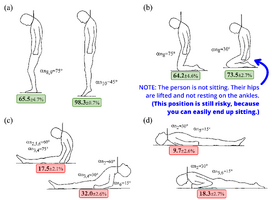I
ifihadnever
Student
- Sep 20, 2025
- 137
Hi,
I've been trying to make a FSH work but it's coming to light my ligature point might not have enough height and end in a standing partial. I wasn't looking at partial as FSH would be preference but before I totally give up on hanging I thought I'd just look in to standing partial and see if it's something I feel would be do-able.
Is there any resources / guides to standing partial? I've used the key search and can find lots of general partial guides but not standing in partial and unsure how the standing works. I think most don't go for standing which is maybe why I can't find much?
Also, seen some videos with the 'aftermath' of standing but not 100% how they got to that stage.
Just thought I'd ask if anyone knew much about it or if there's already some post / links to standing position someone could direct me too?
Thanks for any help / guidance!
I've been trying to make a FSH work but it's coming to light my ligature point might not have enough height and end in a standing partial. I wasn't looking at partial as FSH would be preference but before I totally give up on hanging I thought I'd just look in to standing partial and see if it's something I feel would be do-able.
Is there any resources / guides to standing partial? I've used the key search and can find lots of general partial guides but not standing in partial and unsure how the standing works. I think most don't go for standing which is maybe why I can't find much?
Also, seen some videos with the 'aftermath' of standing but not 100% how they got to that stage.
Just thought I'd ask if anyone knew much about it or if there's already some post / links to standing position someone could direct me too?
Thanks for any help / guidance!

